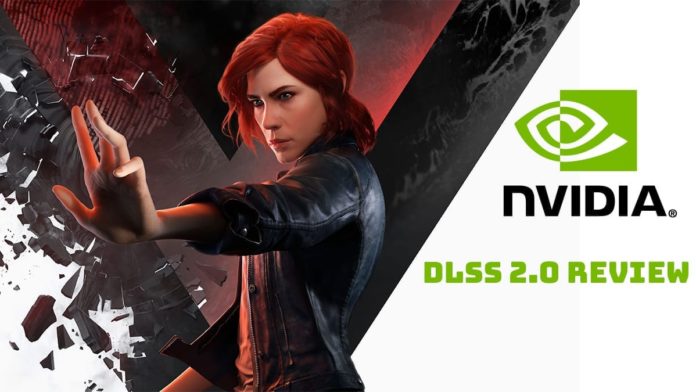
NVIDIA recently released an updated version of DLSS with the latest Geforce update. But in order to experience it, you also need support from developers on a per-game basis. Thankfully, one of those games is Remedy Ent.’s Control, which we’re going to be using today to take a look into what changes DLSS 2.0 brings to the table.
First, a brief introduction.
DLSS, standing for Deep Learning Super Sampling, is an AI technique used by the Tensor cores present in RTX cards. With this, the image is rendered at a lower than native resolution and then upscaled. The idea here is that by rendering the lower res image, you gain more performance while upscaling it to preserve all the details. The first version of DLSS wasn’t what anyone would call a big success. The results were a mixed bag – sure you’d get a boost in framerate, but it would be offset by a blurry image that wasn’t as sharp as the native resolution of your monitor.
DLSS 2.0 aims to correct that. NVIDIA has not updated its neural network to be much faster and efficient, with the goal of producing much sharper and clearer images than before. NVIDIA claims that with DLSS 2.0 the upscaled image quality is even better than native resolution, so that’s what we’ll be testing today with Remedy Entertainment’s Control, one of the first games to support that.
Superior Image Quality? Check
The first thing that NVIDIA promised us with DLSS 2.0 is better image quality. For that, I took screenshots in Control with all the combinations of different settings with RTX and DLSS. I took multiple screenshots at different scenes to get as much detail as possible out, with things like falling debris, screen-space reflections and text on objects in the distance.
DLSS 1.0 Refresher
So let’s start off with the older DLSS version, shall we? Here we’re first looking at DLSS 1.0 in action. RTX is ON in all cases here, as that’s kind of the point of including DLSS. Zoom in on the images here to see the difference for yourself. While it’s not as bad as it used to be, things like Jesse’s hair and text on objects are quite blurry. Notice when aiming the gun
Click on the images to watch the full-resolution version.






As you can (not) see, DLSS 1.0 doesn’t exactly enhance the image. It might be hard to tell from these images, but the result isn’t too different from native 1080p, at least until you zoom in to find the (worsened) details. It gets even worse especially during movement, which is something you’ll be doing a lot (it’s a videogame after all). It doesn’t help either that the game can bring even the most powerful cards down to their knees with RTX On, so the least you’d expect is better-looking pixels.
DLSS 2.0 – The Right Upgrade
Alright, time to go full turbo. Be sure to click on the images to view them in their full size. Now, zoom in a little and you should be able to notice the new changes. DLSS 2.0 upscaling is leagues better than native resolution, fixing about all of the issues in the previous version. You can Now that is impressive! Even with debris on the ground and finer edges like the text on the board, DLSS 2.0 delivers well.








That’s Great, But Are There Any Performance Gains?
Although the DLSS image quality shouldn’t completely depend upon the other components, we’re still including the system we used for testing.
| CPU | Ryzen 7 3700X |
| GPU | NVIDIA RTX 2060 Super Founder’s Edition |
| RAM | 2×8 GB G.Skill TridentZ DDR4 3000MHz |

Above you’ll see the performance differentials with DLSS 1.0, i.e with the older Geforce driver version 442.74. Below, you’ll find the performance benchmarks with DLSS 2.0 with Geforce driver 445.75.

As you can see, performance is about the same and that makes sense as DLSS is rendering at a lower resolution. We played Control at 1080p native, and 720p rendered in DLSS mode in both the older & the newer version.
So, there you go. NVIDIA DLSS 2.0 is looking extremely impressive and I really hope more games make use of that. The updates to the neural network on NVIDIA’s end should allow just that. As we move towards the next generation of consoles, I feel like upscaling and sharpening filters like these are going to provide a more efficient way of sustaining high framerates at higher resolutions like 4K.


